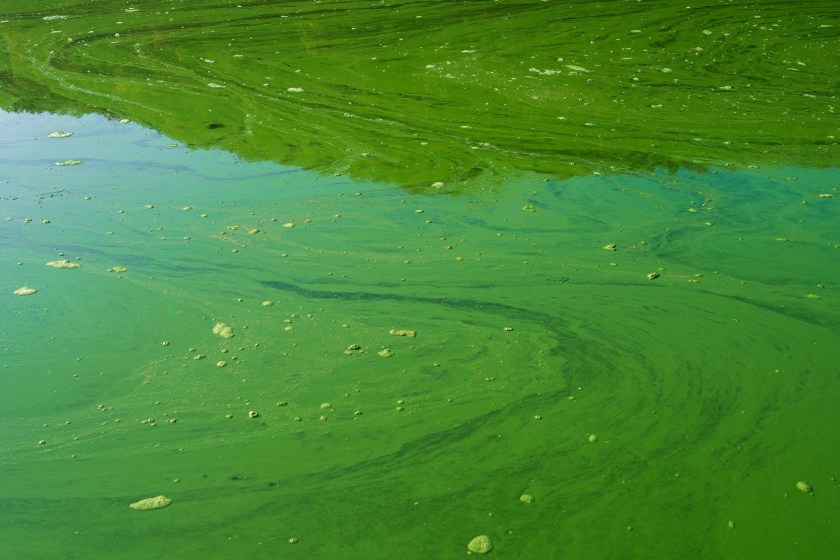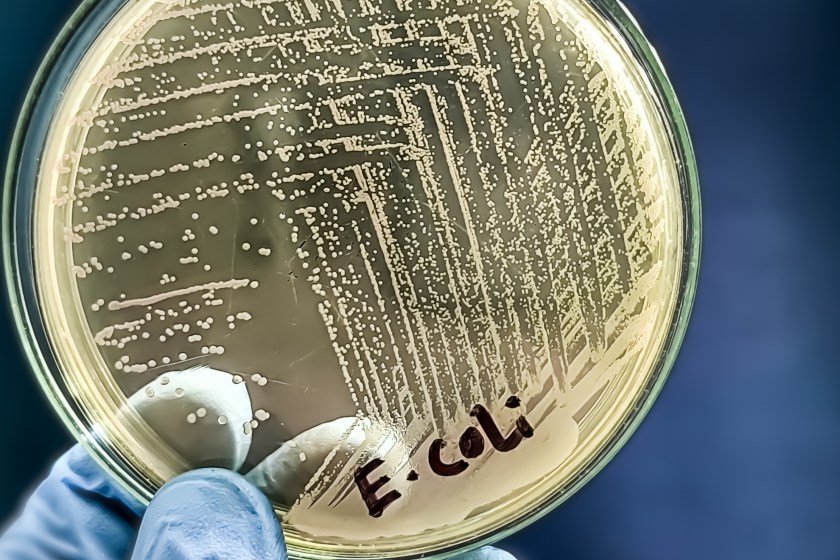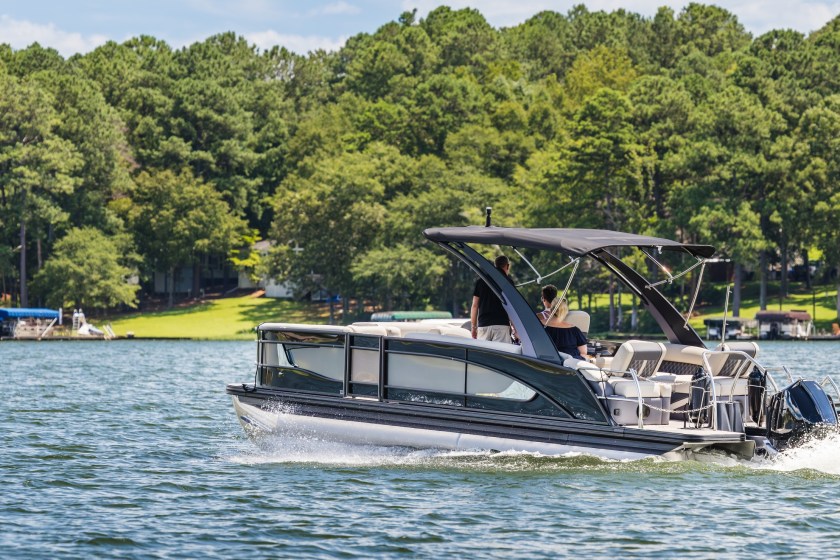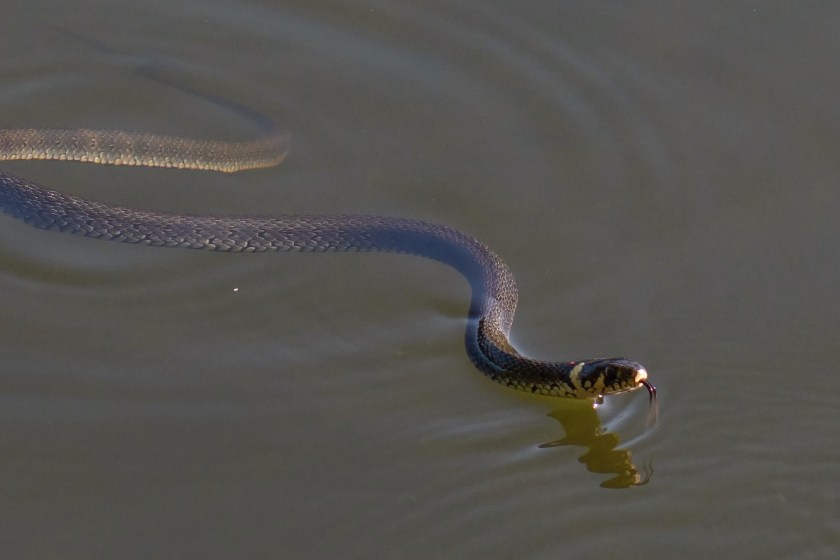I love visiting the lake. It is so calm and serene and, honestly, one of my favorite ways to spend a summer afternoon. Not to mention, it's a bonus that I don't need to worry about sharks while I'm there. That is always a secret fear of mine when swimming in the ocean. However, just because I do not need to be on the lookout for sharks does not mean there are no dangers at the lake. On the contrary, the lake is home to many potentially threatening things and situations. Here are seven hidden dangers you should be aware of when visiting a lake.
1. Algae

Shutterstock Image
Although algae are always present in natural bodies of water, there is a distinction between algae and harmful algal blooms. Toxic algae blooms occur when toxin-producing algae grow excessively in a body of water. The National Institute of Environmental Health Sciences notes that "excessive algal growth, or algal bloom, becomes visible to the naked eye and can be green, blue-green, red, or brown, depending on the type of algae."
People can come into contact with these harmful algae blooms by consuming fish from infected lakes, swimming or drinking water from the lake, or even breathing in the air near the bloom. This is one of those hidden dangers you should be aware of when visiting a lake. Depending on the type of algae, the consequences could be severe. While some may cause vomiting and diarrhea, others can lead to seizures, paralysis, and even death. One that occurs in freshwater produces a liver toxin that leads to gastrointestinal issues as well as liver damage.
2. Bacteria

Shutterstock Image
Next on our list of hidden dangers at the lake is bacteria. Unlike algae blooms, bacteria are harder to spot. One common bacterium found in lakes is E. coli. While E. coli can live in your gut harmlessly, it can also cause severe damage. Most people suffer from gastrointestinal issues. However, some people suffer far worse than others. In rare cases, it can affect the bloodstream or lead to pneumonia. Luckily, the University of Nebraska shares some tips on how to tell if your lake is swimming with E coli. First, if there has been a recent rain, be on the lookout. They share, "When it rains, water runs over the ground, picks up E. coli, and carries it to ponds, lakes, streams, and rivers." Second, if there is a significant presence of waterfowl, be cautious; birds defecate frequently, and their feces can contribute to the presence of bacteria and pathogens in the water. Finally, if there are many people, your chances of high bacteria counts rise.
3. Boats

Shutterstock Image
Where there are lakes, there are boats. For some reason, people assume that driving a boat is very different from operating an automobile. Spoiler alert: they are not that different. The same rules apply regarding being a safe and aware driver. While fatalities are relatively low from boating accidents, they still occur and cause quite a bit of damage. The U.S. Coast Guard shared statistics from 2023 regarding the number of boat accidents. While the fatality rate was low, " 4.9 deaths per 100,000 registered recreational vessels," there was still "approximately 63 million dollars of damage to property as a result of recreational boating accidents." In addition to property damage, many of these accidents resulted in drownings or even injuries where the propellers hit people. Unsurprisingly, alcohol was the leading contributor to these accidents.
4. Currents

Shutterstock Image
Do not make the mistake of thinking that currents only exist in the ocean. They are also present in lakes. Currents in lakes occur due to winds across the surface and from temperature patterns. These are a hidden danger of lakes because while you can spot an algae bloom or a boat, these are more difficult to see. Currents pose a threat to you because they can drag you out towards dangerous areas, such as rocky areas or against boat docks. Additionally, they can push and pull you, either pulling you under the water's surface or tiring you out until the risk of drowning becomes more of a reality.
5. Drowning

Shutterstock Photo
You can drown in any body of water. It doesn't matter if you are the best swimmer in the world; accidents can happen. Whether you get a cramp, a current takes you away, or you slip and hit your head, it is entirely possible to drown in a lake. On our most recent visit to a lake, my husband and I witnessed the near-drowning of a 10-year-old girl. Luckily, a brave citizen jumped in and rescued her. When swimming in the lake, always have proper safety gear, such as life jackets, and ensure you are supervising children at all times. Additionally, do not swim alone.
6. Mosquitoes

Image via Shutterstock
Another hidden danger near lakes is one of my least favorite things in the world: mosquitoes. Mosquitoes love lakes; seriously, they are like their bread and butter. That is because mosquitoes need standing water to lay their eggs and develop. Unfortunately, lake shorelines and edges often provide the perfect opportunities for that. Mosquitoes are dangerous because they can pose more of a threat than just that annoying, itchy bump. These insects can carry and transmit various diseases, including malaria, Zika, and West Nile viruses. Symptoms from these diseases can vary from mild to life-threatening. When visiting a lake, always bring your bug spray and be on the lookout for these winged nuisances.
7. Snakes And Other Wildlife

Shutterstock Image
If you thought snakes only lived on land, think again. Many snakes can and do live in various bodies of water. So, while you may not need to worry about a fin popping out over the water, you may want to keep your eyes peeled for a wriggling serpentine body. Naturally, no one wants to suffer a snake bite. The severity of the bite depends on the type of snake and whether it is venomous.
In addition to snakes, various other types of wildlife can be hidden dangers at the lake. Creatures such as snapping turtles, which can cause severe damage with their powerful bite, or even alligators and crocodiles, depending on your location.




